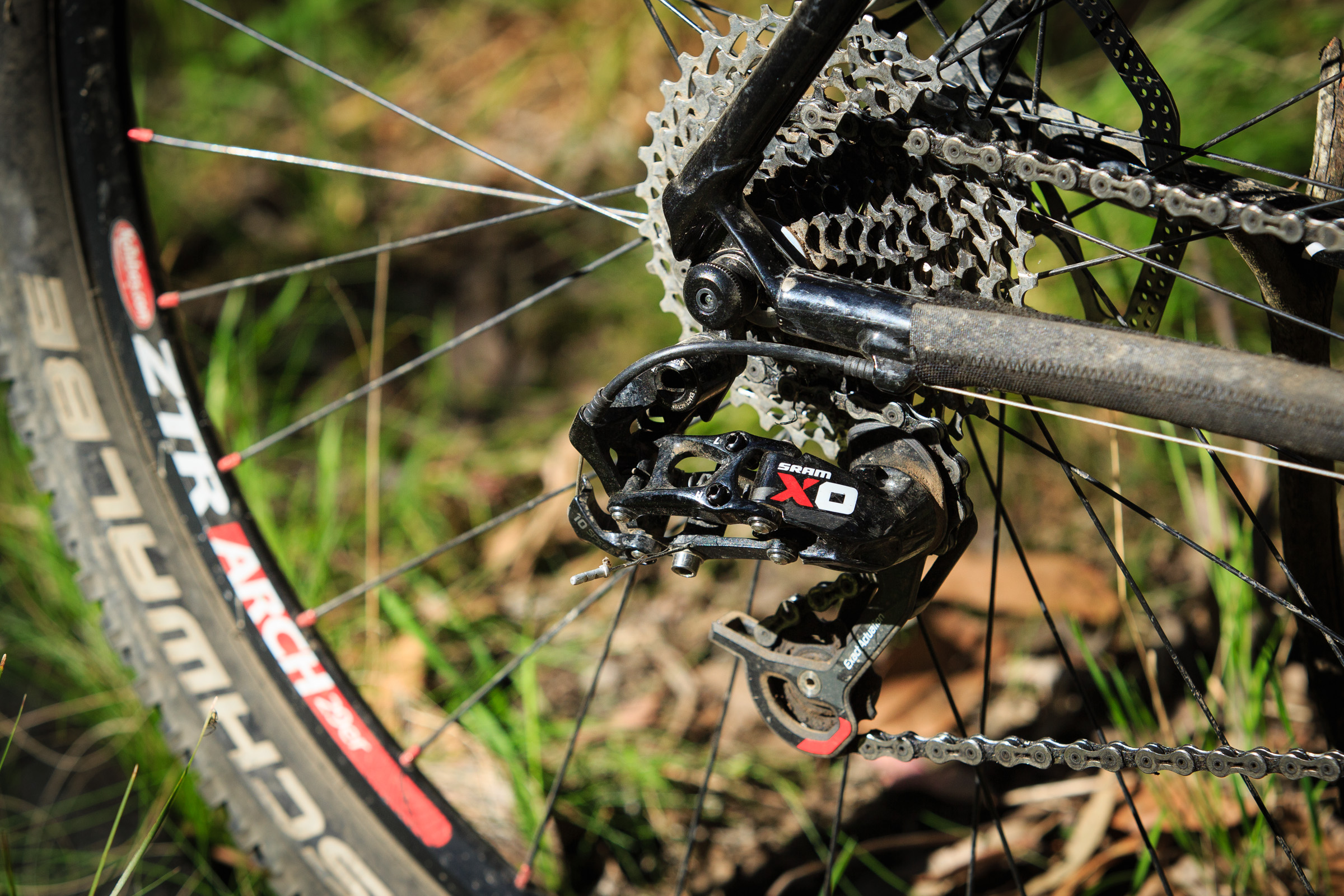I was spoilt for choice when it came to choosing a bike to race the BIG HURT on (a 750km unsupported bikepacking race – read more about it in issue #1 of Flow), but ultimately I chose the Cannondale F29 2, and with very good reason.
One reason I specifically choose the super light Cannondale comes down to the geometry of the bike. Cannondale hardtails have a slightly lower seat tube and top tube when compared to other bikes with the same length top tube. For long distance bikepacking this is a boon; getting on and off the bike (which I did an awful lot on the hike-a-bikes of the Big Hurt race!) is much easier with the low standover height. Aside from bikepacking, this lower-than-average top tube height made the bike a singletrack weapon, providing a spacious platform for my knees to sway side to side in the tightest of technical singletrack.

This comfort of this bike is truly awesome too; traditionally a lightweight carbon frame like this, especially one so stiff in the bottom bracket and headtube areas, would have a harsh ride, but this bike is very smooth. The three-way combination of 29er wheels, the supple Lefty XLR 90 fork and the unique “SAVE” seat post take the edge off rough trails when seated. It’s only when you stand to climb, with the fork locked-out that you once again notice the stiffness of the whole bike, and smile knowing the power transfer is going straight into forward movement.

The seatpost design includes a taper in the upper 1/3rd, which allows the seatpost to flex forward and backwards up to ten millimetres. I thought it was a gimmick, so put a Thomson seat post in, and the difference was noticeable enough for me to go back to the SAVE post after an hour. It really works.

The 90mm-travel Lefty XLR 90 fork is another standout feature, and to be honest, loads of people are going to buy a Cannondale to have bragging rights with the design. I was initially sceptical that a single legged fork would A) be rigid enough, B) track straight, C) be a pain when transporting to from the trails. After spending three months on this bike I can confirm that A) the fork combined with oversized head tube makes for an impressively rigid front end, B) the bike tracks straight even in the roughest of trails and C) slotted disc brake mounts make the front wheel easy to remove for transport.

The groupset is a combination of SRAM X9 and XO parts, which work flawlessly. The shifting is well defined, and the brakes, with a front 180mm rotor up front and 160mm up back, pulled me up easily with a nice modulated feel via the carbon lever (even with none kilos of luggage on board).
One last feature that made me smile, is that the wheels are already setup for tubeless use. I simply had to remove to the tubes, install the Stan’s tubeless valve stems (supplied) and pump up with a compressor. It’s small details like this that make a good bike great.
As much as I liked this bike, there were few little things that bugged me. The first is the integrated stem/headset. It just isn’t the most trail maintenance friendly design, as it requires a bottom bracket tool to tighten. Additionally the stem is Cannondale specific, which does limited the choice if you require a change of stem length or simply want to upgrade. The last two points are personal preference, as the Fi’zi:k Tundra saddle didn’t work with my bottom, and the grips didn’t connect well with my hands.

To surmise, this bike really surprised me. I initially thought it was going to be too harsh and uncomfortable, but I have walked away from this bike test smiling. This bike should have been harsher on my body, and slower in the singletrack with its long wheelbase but it was neither of those. It’s comfortable enough for to spend day after day bikepacking with, yet still rock up to a cross-country race and hit the singletrack so fast that you are only limited by your own reaction times.